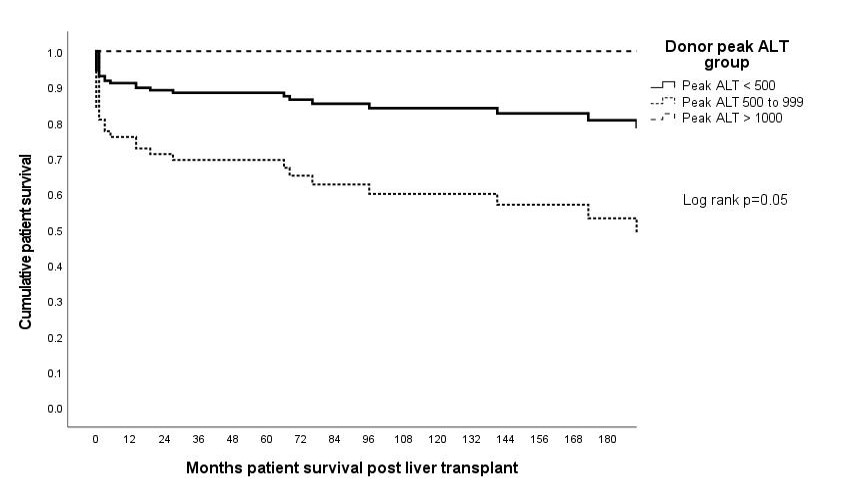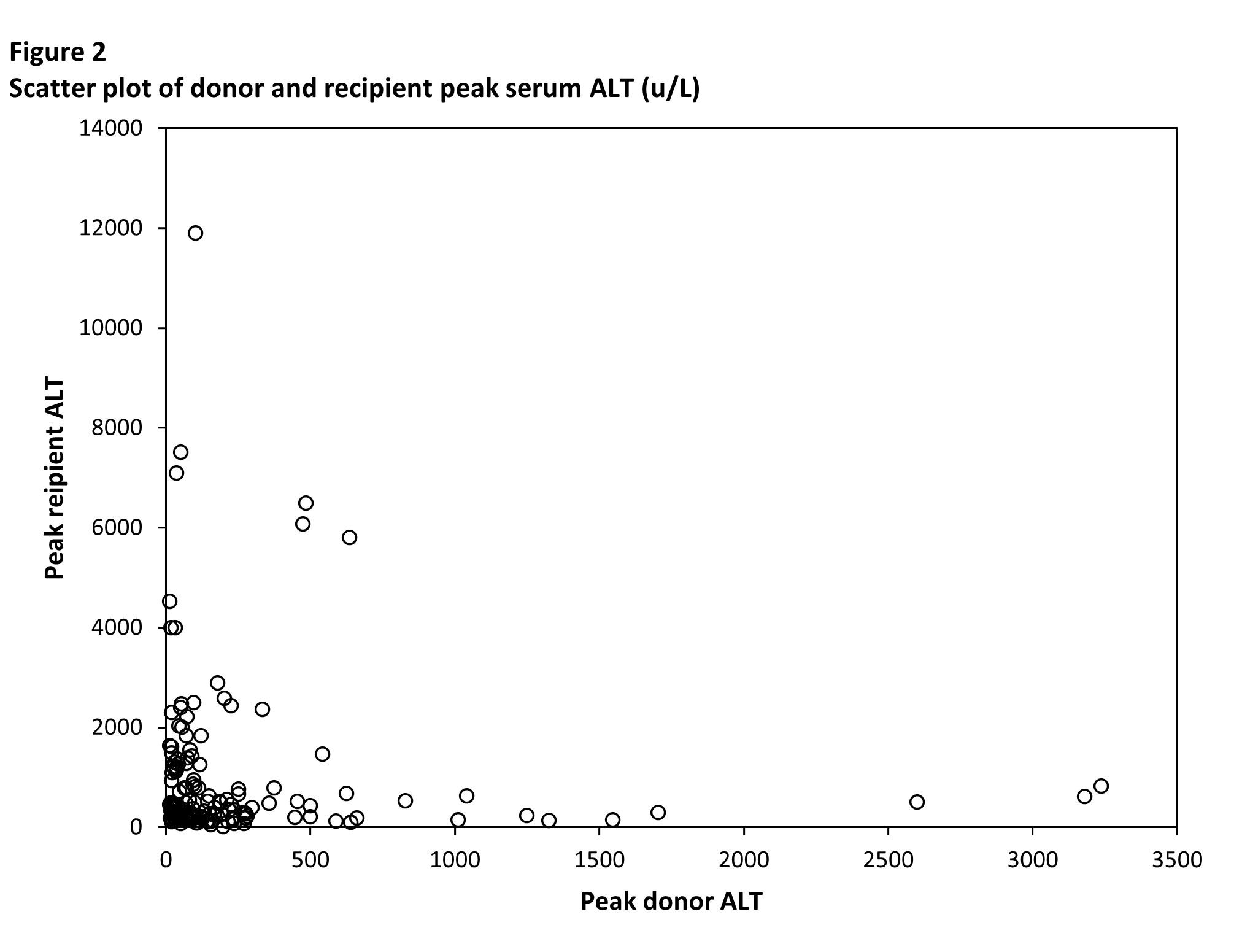Indiana University
Effect of donor elevated alanine aminotransferase on clinical outcomes in pediatric liver transplantation
Taylor Hathaway1, Richard Barnes1, Joel R. Schroering1, Plamen Mihaylov1, Chandrashekhar A. Kubal1, Burcin Ekser1, Kyla Tolliver2, Chaowapong Jarasvaraparn2, Jean P. Molleston2, Richard S. Mangus1.
1Department of Surgery, Indiana University School of Medicine, Indianapolis, IN, United States; 2Department of Pediatric Gastroenterology, Indiana University School of Medicine, Indianapolis, IN, United States
Background: Serum aminotransferase levels in the organ donor contribute in the transplant surgeon's appraisal of a potential liver graft. This study examines the outcomes of utilizing donor liver grafts from deceased donors with moderate and severe elevations in serum alanine aminotransferase(ALT) in the pediatric population at our center.
Methods: This is a single-center retrospective review of 150 pediatric liver transplants from 2001-2022. Donors are grouped based on peak serum ALT obtained before organ procurement (normal/mild, <500 u/L; moderate, 500-1000 u/L; and severe, >1000 u/L). Outcomes include recipient length of stay, graft survival and patient survival at 7 days, 30 days, and 1-year post-transplant.
Results: There were 150 pediatric liver transplants performed during the study period for which sufficient data were available. Of those 150 transplants, 132 donors (88%) had normal/mild ALT elevation, 9 (6%) had moderate ALT elevation, and 9 (6%) had severe ALT elevation. Graft and patient survival at 7 days, 30 days, and 1-year and length of hospital stay did not differ significantly among the groups. A scatter plot of donor peak ALT and recipient peak post-transplant ALT did not show a positive association. Kaplan-Meier estimates of patient survival based on donor peak ALT demonstrated a statistically significant difference with the recipients from donors with severe ALT elevations having the highest survival and those from donors with moderate elevations having the lowest survival (p=0.05).
Conclusions: Pediatric liver transplant recipients at our center have similar post-transplant clinical outcomes regardless of donor peak serum ALT despite a statistical significance on Kaplan-Meier estimation. The study is limited by a small sample size of elevated ALT donors, but is the first study of elevated donor ALT in pediatric liver transplantation.


Lectures by Richard Barnes
| When | Session | Talk Title | Room |
|---|---|---|---|
|
Tue-28 09:10 - 10:10 |
Liver | Effect of donor hypernatremia on clinical outcomes in pediatric liver transplantation | Hill Country AB |
|
Sat-25 18:00 - 19:15 |
P7- Liver / Intestine Posters | Effect of donor elevated alanine aminotransferase on clinical outcomes in pediatric liver transplantation | Zilker 1-2 |
